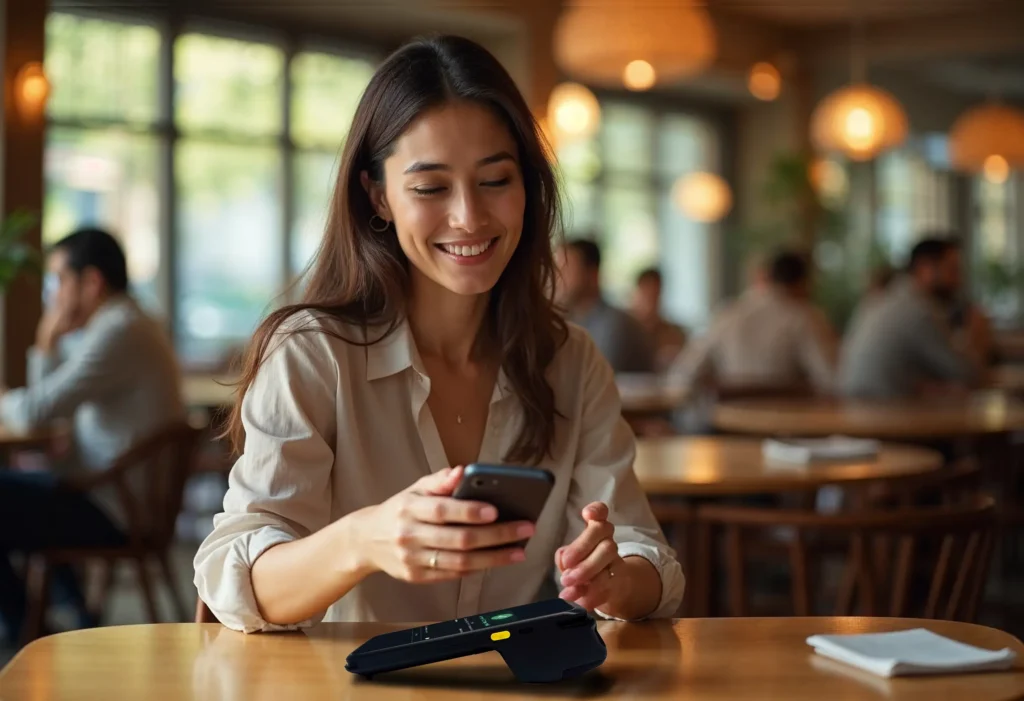
The Rise of Contactless Payments in Restaurants: A 2025 Perspective on Digital Transaction Evolution
In today’s rapidly evolving restaurant industry, contactless payments have transformed from a convenience to a necessity. As we navigate through 2025, the adoption of touchless payment solutions has reached unprecedented levels, reshaping how restaurants operate and how customers interact with their favorite dining establishments.

The Current State of Contactless Payments
According to recent industry data, 87% of restaurant transactions now occur through contactless methods, marking a significant shift from just 45% in 2020. This dramatic increase reflects both technological advancement and changing consumer preferences in the post-pandemic era.
Key Statistics:
- 92% of customers prefer restaurants offering multiple contactless payment options
- Mobile wallet usage has increased by 156% since 2023
- QR code payments have seen a 200% growth in fine dining establishments
- 78% of restaurants report reduced transaction times with contactless systems
Benefits of Contactless Payment Integration
1. Enhanced Customer Experience
- Reduced wait times (average reduction of 4.5 minutes per table)
- Improved order accuracy
- Greater payment security
- Flexibility in payment methods
2. Operational Efficiency
- 35% faster table turnover rates
- 23% reduction in staff payment processing time
- Automated tip calculations and splitting
- Simplified end-of-day reconciliation
3. Financial Advantages
- Reduced transaction fees (average savings of 0.4% per transaction)
- Lower cash handling costs
- Decreased risk of counterfeit currency
- Improved cash flow management
Implementation Strategies for Restaurants
1. Choosing the Right POS System
Modern POS systems must support multiple contactless payment methods:
- NFC (Near Field Communication) payments
- QR code transactions
- Mobile wallet integration
- Contactless cards
- Digital invoice payments
2. Staff Training Requirements
- Payment processing protocols
- Troubleshooting common issues
- Security compliance measures
- Customer service best practices
3. Customer Communication
- Clear signage displaying payment options
- Staff education on explaining payment methods
- Digital menu integration with payment systems
- Loyalty program integration
Security Considerations
1. Payment Data Protection
- EMV compliance requirements
- Encryption protocols
- Tokenization methods
- Regular security audits
2. Fraud Prevention
- Real-time transaction monitoring
- Authentication measures
- Chargeback protection
- Staff security training
Cost Analysis and ROI
Initial Investment
- POS system upgrade: $2,000-$5,000
- Staff training: $500-$1,000
- Implementation costs: $1,000-$2,500
Return on Investment
- Average payback period: 8-12 months
- Transaction fee savings: 0.3-0.5%
- Labor cost reduction: 15-20%
- Customer satisfaction increase: 35%
Future Trends and Innovations
1. Biometric Payments
- Facial recognition systems
- Fingerprint authentication
- Voice-activated payments
- Behavioral biometrics
2. Integration with Smart Devices
- Smartwatch payments
- IoT device integration
- Smart table ordering systems
- AI-powered payment recommendations
3. Blockchain and Cryptocurrency
- Digital currency acceptance
- Smart contracts for payments
- Decentralized payment networks
- Crypto loyalty programs
Implementation Checklist for Restaurant Owners
Assessment Phase
- Current system evaluation
- Payment volume analysis
- Customer preference survey
- Competition analysis
Planning Phase
- Budget allocation
- Timeline development
- Staff training schedule
- Marketing strategy
Execution Phase
- System installation
- Staff training
- Customer communication
- Soft launch period
Monitoring Phase
- Transaction analysis
- Customer feedback
- Staff performance
- System optimization
Best Practices for Success
Customer Education
- Clear instructions
- Multiple language support
- Staff assistance availability
- FAQ documentation
System Maintenance
- Regular software updates
- Hardware maintenance
- Security patches
- Performance monitoring
Data Analysis
- Transaction patterns
- Customer preferences
- Peak usage times
- Error rates
Conclusion
The adoption of contactless payments is no longer optional for restaurants aiming to remain competitive in 2025. With proper implementation, these systems offer significant benefits in efficiency, customer satisfaction, and operational costs. Restaurant owners must carefully evaluate their options and create a comprehensive implementation strategy to maximize the return on their investment.
Key Takeaways
- Contactless payments are now the preferred method for 87% of restaurant customers
- Implementation requires careful planning and staff training
- Security and compliance must remain top priorities
- The future holds exciting innovations in payment technology
- ROI can be achieved within 8-12 months with proper implementation
By embracing contactless payment technology, restaurants can position themselves for success in an increasingly digital marketplace while meeting the evolving expectations of their customers.



